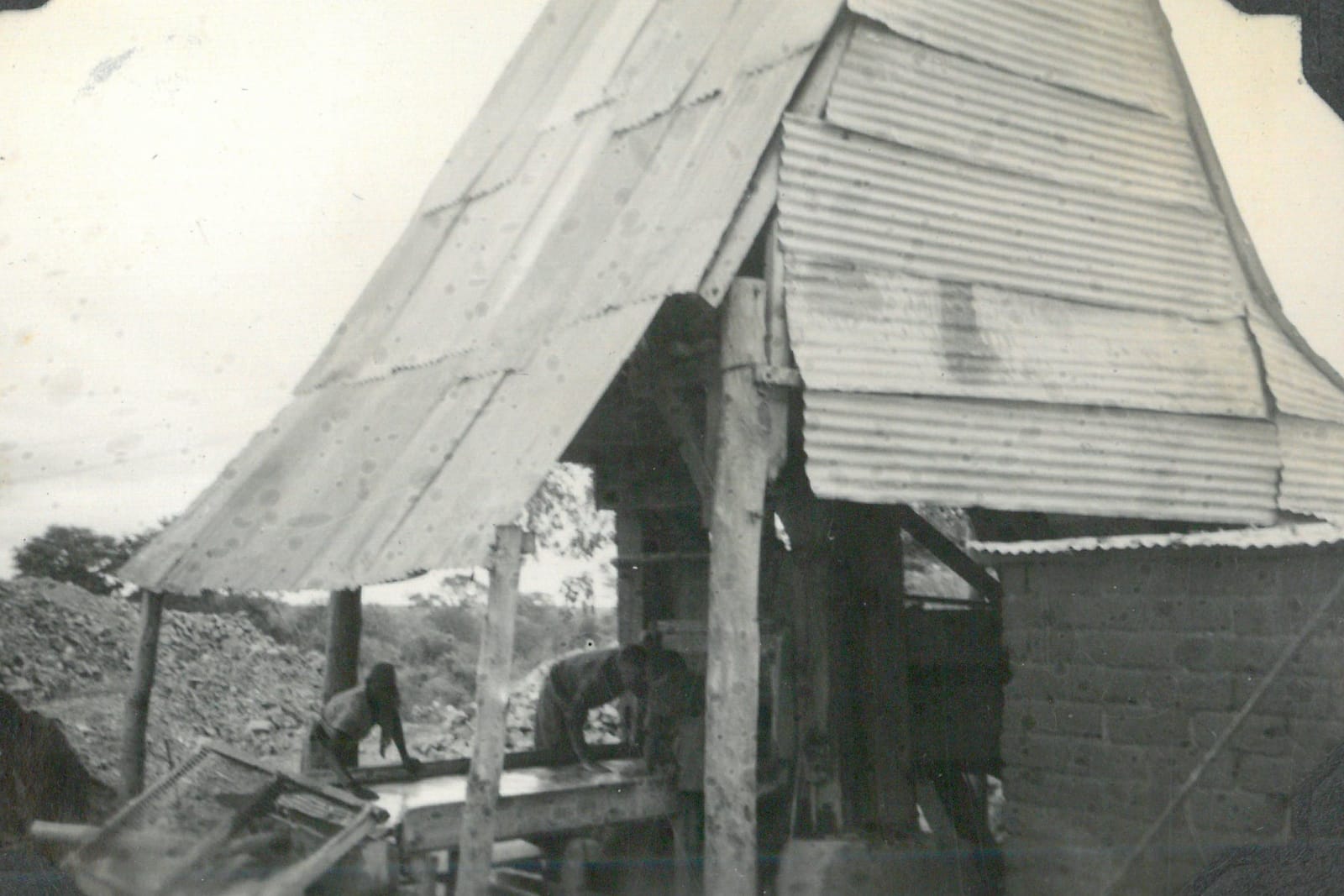Shake, Rattle and Roll
Gold mining starts out as an adventure with dreams of riches untold. Soon it becomes a mistress, then a master, then a tyrant to be delicately handled.

The rhythm of the stamps of the mill must be finely tuned to rise and fall in sequence to crush the gold bearing ore. Once the cams have been set, the demand is unrelenting. The mill must run 24/7, 365 days a year. The monotonous drum beat is heard far and wide.
The hopper must be fed with ore by hand constantly to avoid the hammers of the battery damaging the steel shell of the mortar box instead of crushing rock. If the hammers fall directly on the plate there's a change in the timbre to the rhythm and the hammers will be damaged.
The Turtle Mine was very isolated and the manager, Bill Atkinson's nearest white neighbors were many miles away. Valarie, Barbara and Bobby were homeschooled by their mother.
The Turtle ran a 5 stamp mill. Not infrequently, Bill would wake up with a start in the wee hours of the morning. The drum beat of the mine had altered. He would charge down the hill in his pyjamas to "sort out" the unfortunate operator who had fallen asleep.
Dressing the Plate with Quicksilver
Once the ore was crushed by the mill to the consistency of fine sand it was then passed over amalgam plates to recover the majority of the gold. These copper plates were dressed with quicksilver (mercury). The gold would amalgamate with it to form amalgam, a putty like substance comprising of gold grains and mercury. The amalgam was scraped off the plates periodically and placed in a retort to separate the two metals. The recovered mercury was re-used.
The sponge gold was smelted in a furnace with borax as a flux to the doré. This gold was then sent via Standard Chartered Bank transport to the refinery for refining to 999 bullion.
But there were still more demands to be met! The tailings, containing small amounts of gold, not to be overlooked. After shake, rattle and rolling on a James shaking table the product from these tailings was sent to the Government owned, one and only, Roasting Plant in Que Que to recover the gold from other impurities, chiefly antimony which was an impurity of local ores, used in cattle dip and the treatment of bilharzia which was endemic. Keith Keitzman maintained that the arsenic in the dust that blanketed the area around the Roasting Plant kept him safe from bilharzia during the Revolutionary War, but more likely it was the antimony. Mercury is toxic and is no longer used in dentistry.
Today, the use of quicksilver by artisanal gold miners is not recovered in a retort, but is released directly into the environment, polluting crops and traveling downstream all the way to the ocean. Its use is widespread in the Global South, including Zimbabwe.
Whitewashed Jacarandas and its sequel Full of Possibilities depict the heady pulse of Rhodesia when Rhodes’ ambitions finally promised realization after a fifty-year slumber, with an infusion of young and ambitious blood anxious to make a new life after WWII.
The books are about racial arrogance, paternalistic idealism, Zionist fervor and anti-Semitism, the proper place of a wife, modernization versus hard-won ways of doing things, and treatment of endemic disease versus investment in public health.
References:
- Bob Atkinson personal correspondence
- Photo credit: Valarie Barbour (nee Atkinson)

